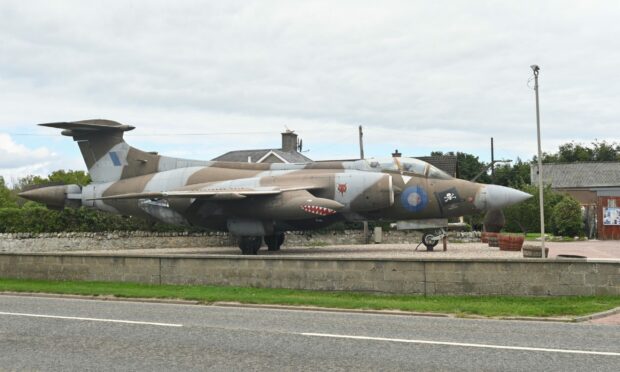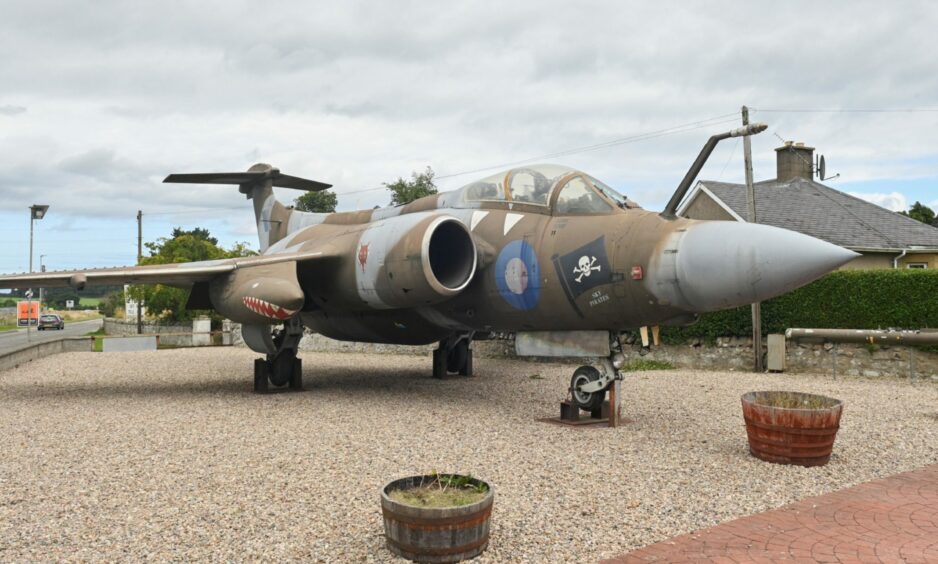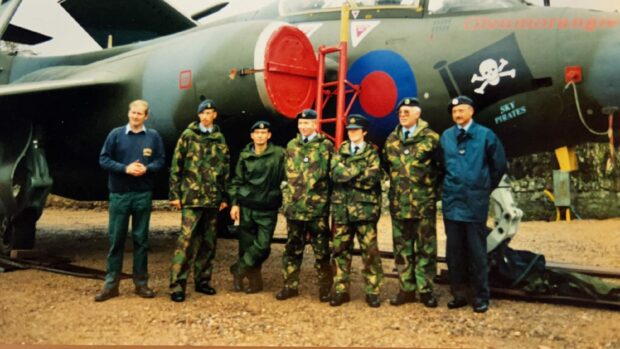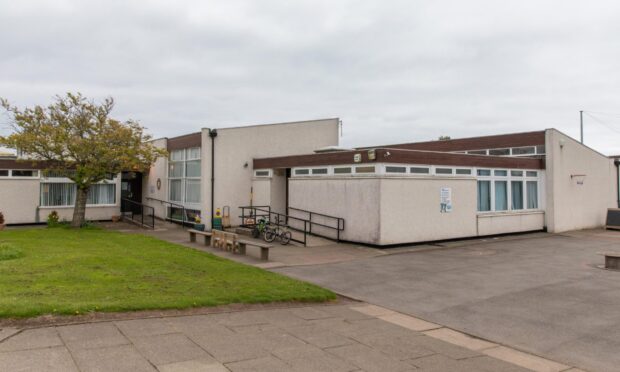A decommissioned Buccaneer – a 1950s nuclear bomber aircraft – will be used as an education tool in Fife.
The historic fighter and bomber jet, deployed by the RAF in the Gulf War, will arrive in the Kingdom next month.
It will be displayed and accessible to the public at the Scottish Deer Centre, in Cupar, alongside the centre’s other vintage vehicles.
The purchase was made by the park’s new co-owners David Hamilton and Gavin Findlay, as part of an ongoing project to create a more interactive visitor experience.
Storyboards outlining the aircraft’s history will be on show next to the vehicle and complementary talks at the park’s Raptor World will compare it with how birds fly.
David said: “When we decided we were going to get a collection of vintage vehicles, a jet was number one on the list – a Spitfire or something.
“But they don’t come up for sale very often so when we saw the Buccaneer was for sale we had to make sure we got it.”
‘Best of British engineering’
The jet was originally owned by the Royal Navy then the RAF before the fleet of Buccaneers were retired in 1994.
During its active deployment the Buccaneer would fly at low levels to remain undetected by enemy radars, with a Tornado fighter plane either side.
The Buccaneer pilot would identify a target and illuminate it with a laser and bombs would be dropped from the Tornados.
Buccaneers saw combat action in the first Gulf War of 1991 but were scrapped three years later due to metal fatigue.
However, businessman Iain Aitkenhead managed to save this particular aircraft, which he describes as the ‘best of British engineering’, from scrappage when he made a private offer to the Ministry of Defence (MoD).
Aviation enthusiast Iain, from Elgin, said: “I remember up seeing them flying around from RAF Lossiemouth when I was a youngster, they had quite a fleet of them.
“I was always interested in them. I found out the MoD was scrapping them and was sad to see them go. I had contacts and submitted them an offer.”
For 25 years Iain, company director of a group of filling stations in his name, parked the aircraft at his site in Elgin – the Buccaneer Service Station.
He made the decision to sell the Buccaneer and the plot as his business prepares for a change in direction.
It will be transported to Cupar by police escort, overnight on an evening towards the end of the month.
Read more on the final flight of the Blackburn Buccaneer here.












